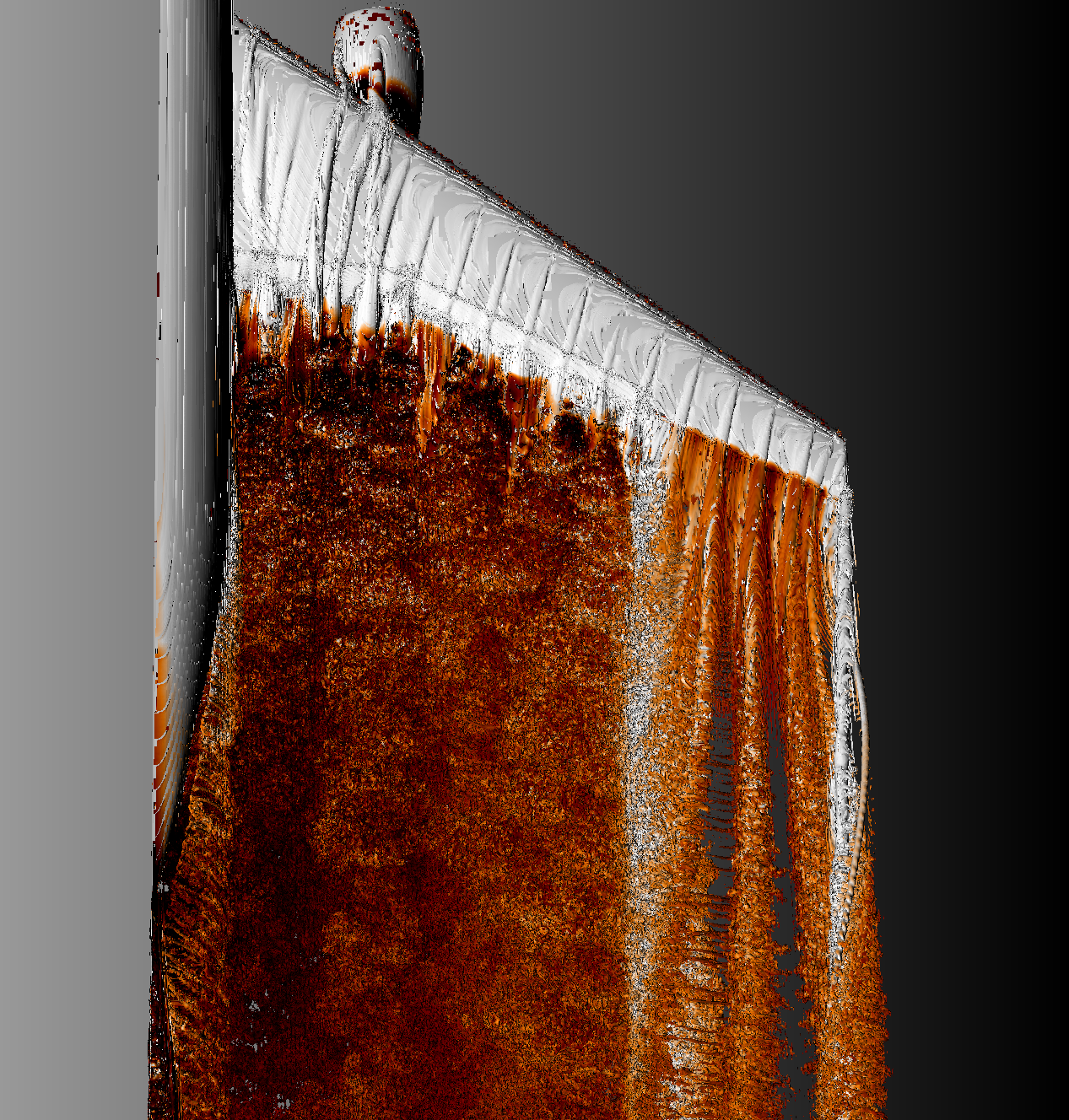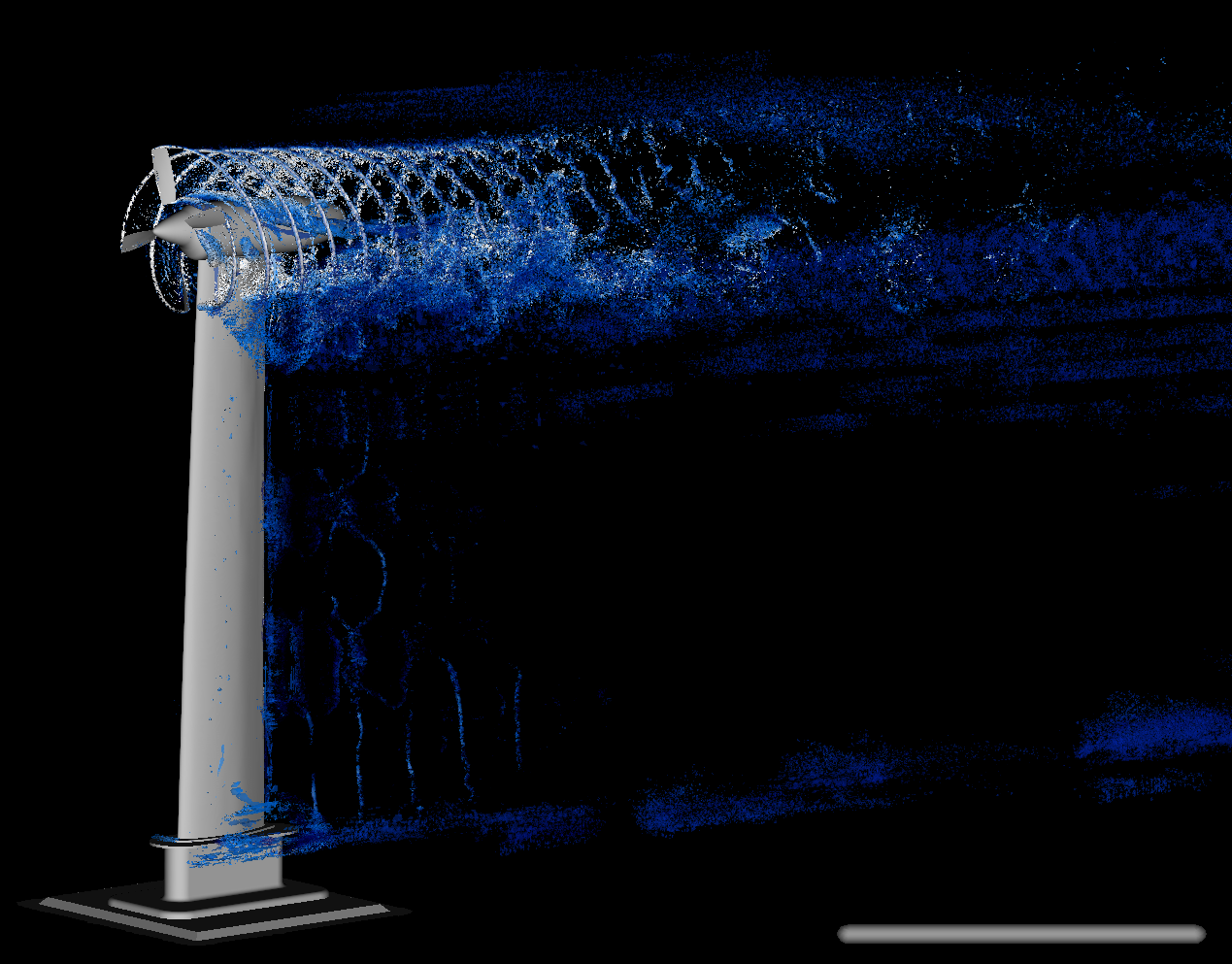Fixed-Wing
Learn more about multi-mesh, multi-solver simulations for aerospace aircraft.
Via solver technology development, we work towards advancing the aerospace design space through CFD. Using our WAKE3D framework, we have studied many problems spanning fixed- and propeller-wing aircraft, including participation in the AIAA High Lift Prediction Workshop series. Additionally, we have studied jet-propulsion flows focused around aeroacoustics. Much of this work is guided by the NASA CFD Vision 2030.
AIAA High Lift Prediction Workshop CRM
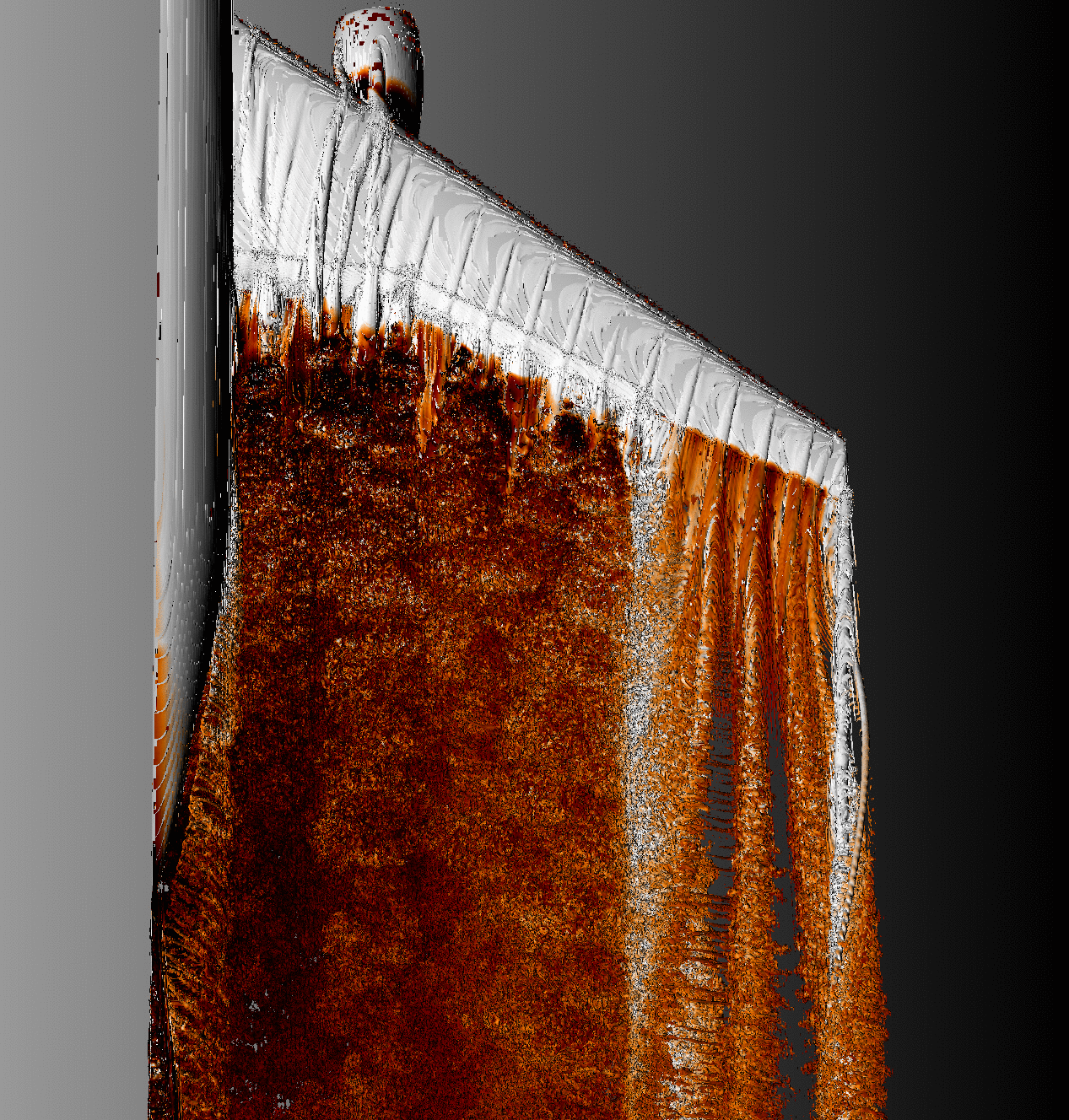
We participated in the 2022 AIAA HLPW, which focused on studying CL-max (max lift coefficient) of the NASA Common Research Model aircraft. We applied a hybrid RANS-LES approach through our dual-mesh, dual-solver WAKE3D. The finite volume CFD code NSU3D is used in the near-body region to solve the Reynolds-Averaged Navier Stokes (RANS) equations, and in the off-body region, the discontinous Gakerkin solver dg4est is used to solve the compressible Navier-Stokes equations with a Large Eddy Simulation (LES) subgrid scale model. The near-body region is composed of unstructured mixed-type mesh elements which is overset with a 16-level adaptive Cartesian adaptive off-body mesh. To exchange solutions between these two regions, TIOGA (topology-independent overset grid assembler) is used determine overlapping mesh elements, apply hole cutting, and interpolate the solutions.
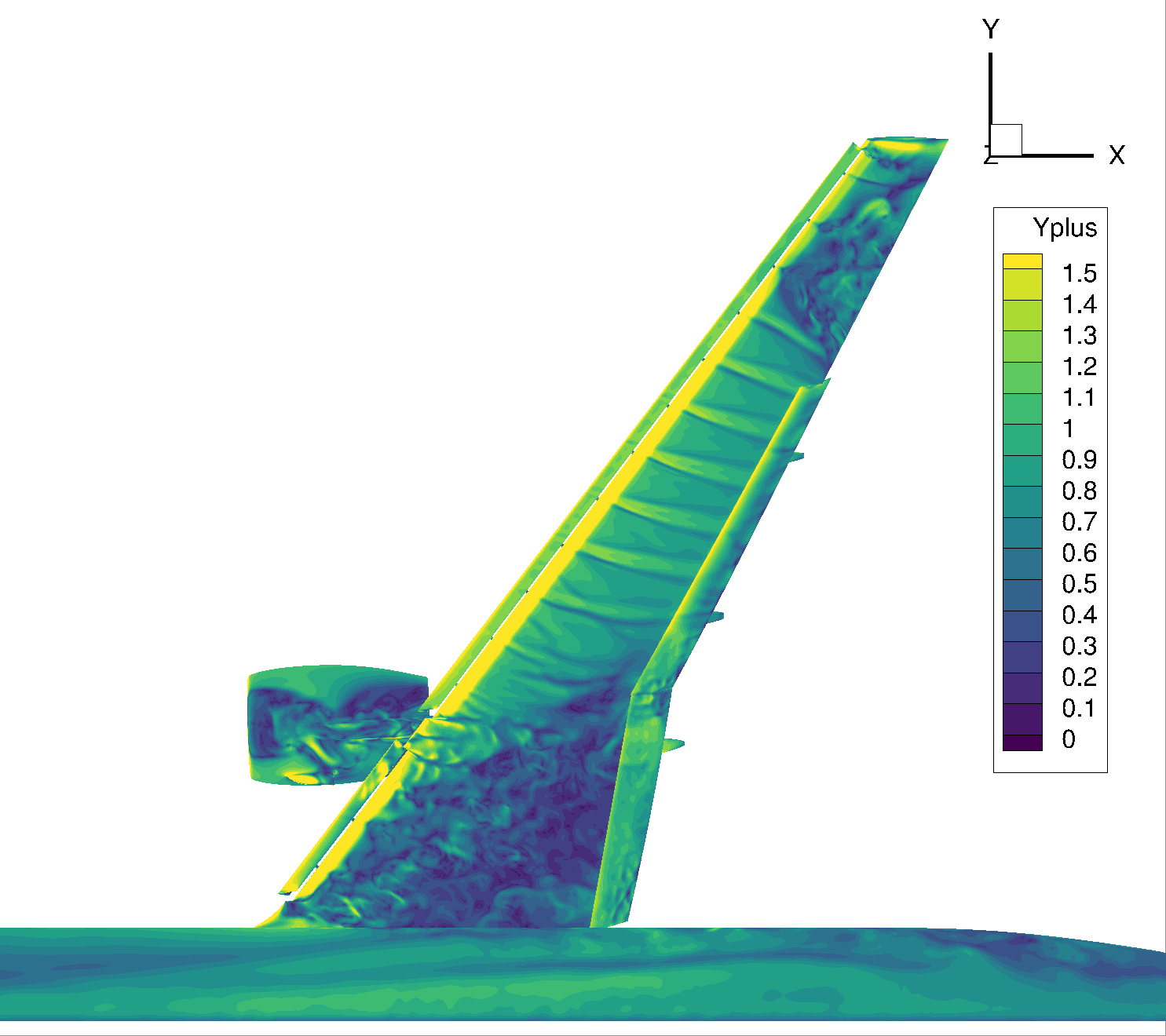
Using our framework, we are able to examine flow separation patterns on difference areas of the wing planform. Here, y+ is a nondimensional distance that relates the friction velocity, wall distance, and kinematic viscosity to provide an estimate for mesh resolution. A y+ value less than or equal to 1 indicates sufficient resolution for capturing the wall boundary layer profile.
SMC006 Jet Nozzle
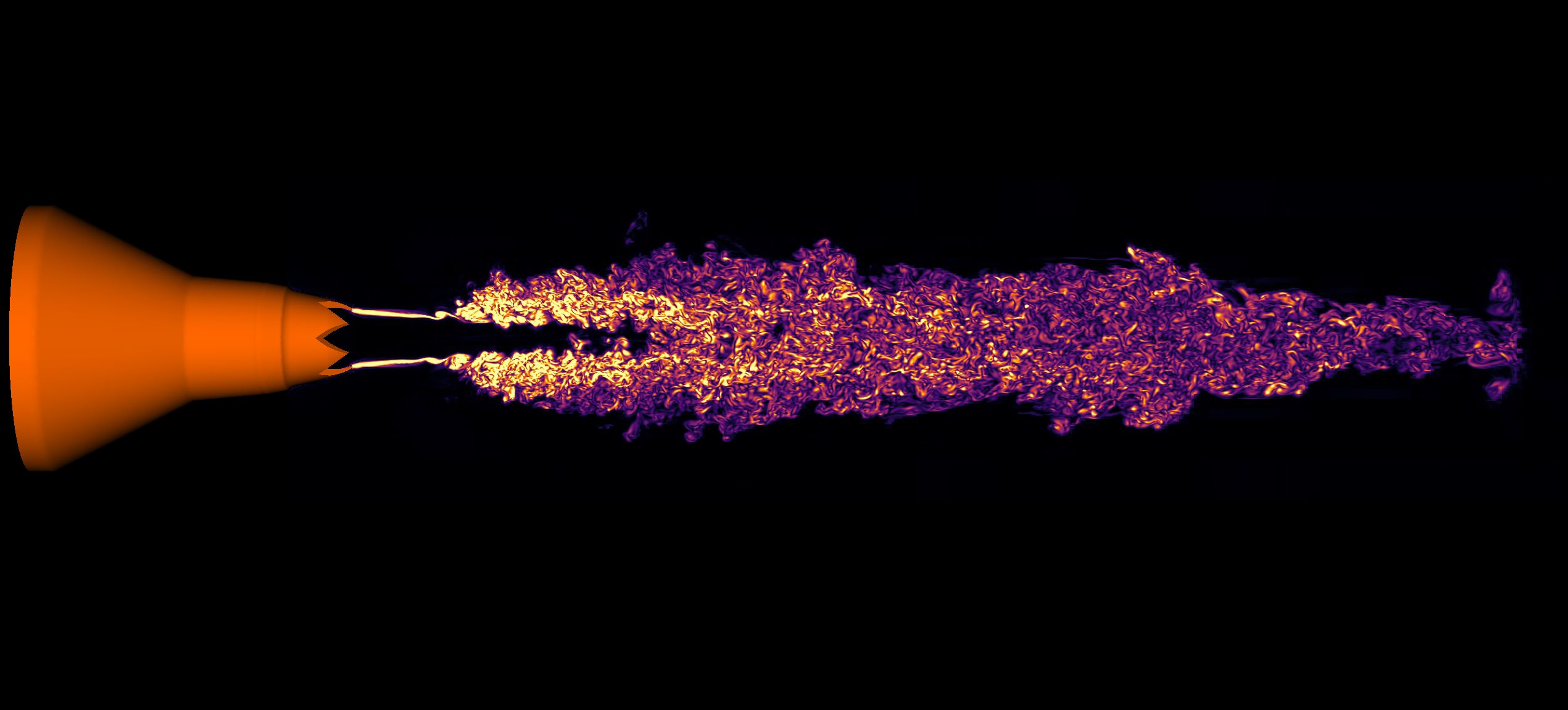
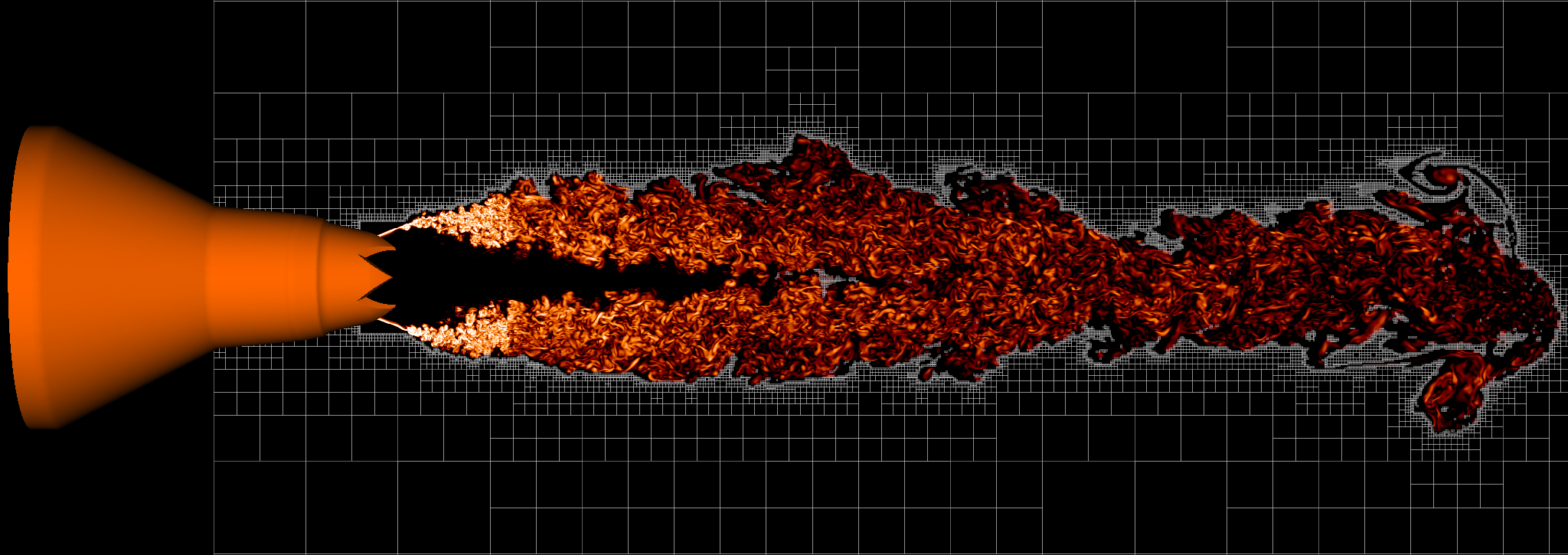
Computational Fluid Dynamics-Computational Aeroacoustics (CFD-CAA) is a very important area of research focused on accurate prediction of acoustics generated by aerospace vehicles. One canonical test case for studying CFD-CAA is the SMC006 jet nozzle, which was studied at NASA.
